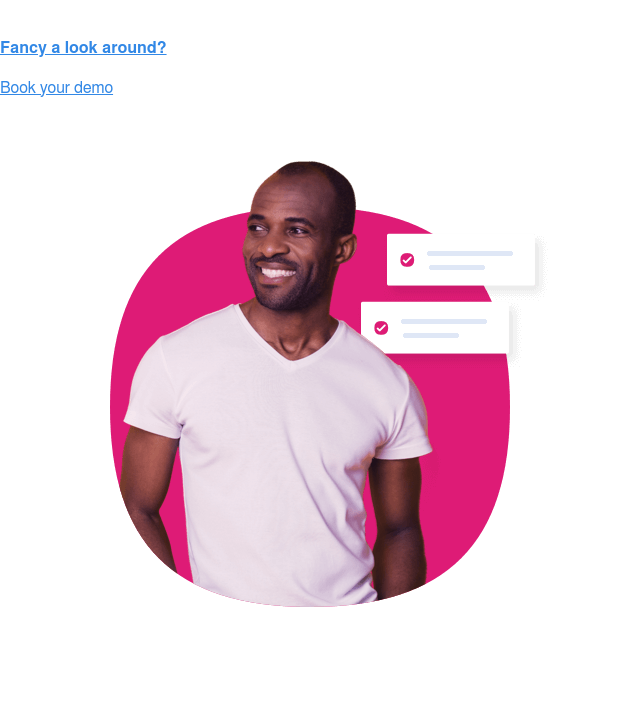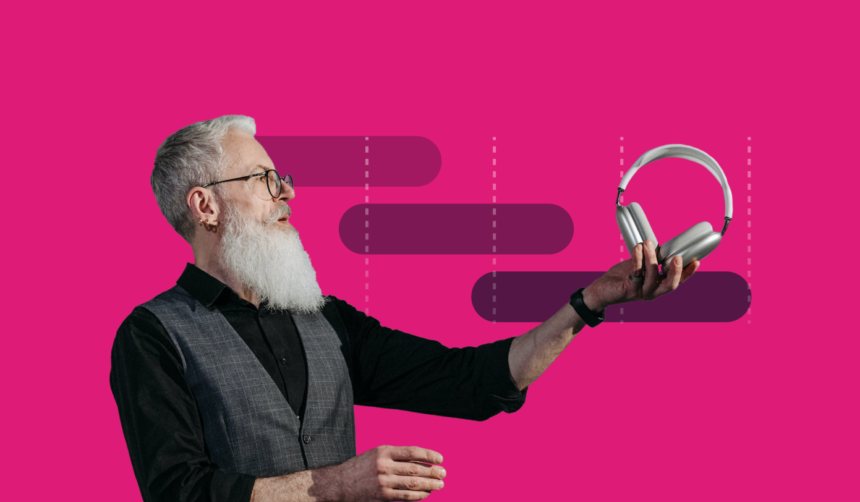What’s more exciting than coming up with a game-changing idea for product development? Not much. From the buzz of inspiration to that breakthrough “aha” moment, there’s nothing like finally getting the clarity you need to knock product expansion or a new brand partnership out of the park.
But successfully taking an idea from first thought to finished execution doesn’t happen overnight.
It’s important to understand how to get from point A to point B with a clear process.
In this blog we’ve put together a complete product development process guide you can use as your roadmap to bring your budding ideas to full blossom.
Ready to grow? Let’s get into it.
- What is product development?
- What goes into the product development process?
- Product development with GWI
- Product expansion: A step-by-step guide with GWI
- GWI in action: How Sony used custom insights to steer strategy
- How big brands are nailing their product development process
- Why having a solid product development process matters
- Product development process FAQs
What is product development?
Product development is the process of bringing a product to market. Whether you’re starting fresh or improving an existing offering, the development process is designed to help simplify the path from beginning to end. By breaking down the process into steps that help create clear goals at each stage, you can move forward with a solid strategy.
What goes into the product development process?
Product development is like building a house. There are a lot of critical steps to follow but it all comes down to starting with a strong foundation before you move onto the bigger stuff.
Here’s your blueprint.
Idea generation
Imagine you’re a marketer trying to come up with a new food product that not only gets consumers excited, but also aligns with your overall strategic goals. Here’s where the magic (and endless brainstorming) happens. This is the time to collect, filter, and review initial concepts to see what sticks so you can ultimately launch a standout product.
Research and planning
After digging into the latest consumer data, you start to learn which consumers will use the product, how the product will appeal to them, and what existing products you can improve on with your own innovations. Using insights from GWI, you discover 56% of gamers say they like chips (5% more likely than the average consumer) and decide to formulate the perfect savory snack to bring this insight to life.
Product prototyping
Consider this the experimental phase. Now it’s time to develop a few recipes based on your most promising ideas so you can understand what works and what needs improvement. The goal during this stage is to create a potential product based on your concept, research, and planning to use as a sample.
Product testing
Once you’ve developed a product you’re proud of, it’s time to test it with the people who matter most – your target audience. This is where you gather real-time feedback that either validates your product or sends you back to the drawing board – or in this particular example, kitchen. Depending on what happens, you may need to return to the prototyping stage to perfect the details.
Product creation
Once you’ve found the recipe that works best, you can start creating a final product based on the insights you got from testing your prototype. This is what you’ll be putting on the market once you’re absolutely sure your target audience will love it, setting the stage for a successful launch.
Product launch
When the big day arrives, it’s time to put all that research and planning into action by introducing your new snack using whatever sales channels are most suitable for your product and industry. Because you stay plugged into the biggest consumer trends, you not only know the perfect time to enter the market, but also how to keep up with changes so your product stays competitive, up-to-date, and in demand.
Product development with GWI
Product expansion and brand partnerships are integral to new product development (NPD). They’re strategies that diversify your business, strengthen your identity, and create new growth opportunities – especially when you’ve the data to back them up.
If you want to expand your existing product suite, break into unexplored markets, or connect with new consumers, the next section shows you how.
Product expansion: A step-by-step guide with GWI
1. Define and create your target audience
Let’s say you’re a high-value consumer tech brand considering launching a new version of your main product at a lower price point.
The first step is defining and creating your audience. For this example, we’re looking at smartphone engagers, but to get a clear view you can be more specific and only include consumers who say their mobile is their most important and most utilized device.
This will help you identify the people who feel their smartphone is an important and considered purchase.
2. Build and explore charts
Next, you’ll want to build a chart to dive deeper into the details. After applying your saved audience, you can explore the income segmentation tab to see where your audience sits across high, low, or medium earners. This will help you decide if a lower value product is relevant to your target group.
Based on the chart above, you can see that around 65% of your audience are either middle or low earners, which validates your idea that a cheaper version of your smartphone might be a good fit given their lower disposable income.
3. Make data-led decisions
You can go even deeper by looking at more charts around attitudes, lifestyle behaviors, and purchase behaviors to really drive your point home and uncover more insights to power your strategy.
GWI in action: How Sony used custom insights to steer strategy
When Sony Hong Kong wanted to create and roll out Korean TV drama content in the US, the team turned to GWI to get tailored answers straight from the consumers they were targeting.
Because Korean drama content hasn’t historically aired on national linear US television, there was no traditional hard data on their target audience, what they were watching, or how much they were watching.
To overcome this challenge, Sony ran a custom GWI survey and not only discovered interesting audience profiles, but also uncovered deeper insights like why American consumers watch Korean dramas in the first place, how they want to consume them, and what viewers value most.
The team was able to back up their hypothesis that they should be producing more Korean dramas to export outside of Asia, using reliable data to point their strategy in the right direction.
How big brands are nailing their product development process
A brand partnership can be an effective way to build a product that works for many different segments, helping to boost sales, improve brand recognition, and increase credibility.
With the insights to back you up, you’ve more room to be creative, daring, and unique.
Hermès and Apple Watch
This brilliant collaboration is what happened when tech met luxury. The Apple Watch/Hermès partnership is a great example of strategic co-branding. These companies took what worked for them individually and combined the power of their reputation and high quality products to create an authentic, on-brand product that taps into Hermès’ equestrian roots.
It may seem like a random choice for a French luxury goods brand to team up with a technology company, but there’s data to backup this decision, with clothing buyers in the US saying they’re 25% more likely than the average consumer to have shopped at an Apple store in the last 3 months.
Balenciaga and Bang & Olufsen
A fashion house teaming up with a high-end consumer electronics company may seem like another unlikely pair but what they’ve created is even more unique. These brands came together to design a limited-edition speaker purse, and to take it up another notch, they only released 20 bags worldwide which could only be purchased exclusively at the new Balenciaga Couture store in Paris.
Sounds crazy, but it worked. Luxury buyers have their eyes set on the latest tech and they’re 45% more likely than the average consumer to say they buy new tech products as soon as they’re available, with smart home products in particular taking their fancy.
Fendi
Fendi is into coffee – like, really into it. First the Italian luxury fashion house opened a pop-up cafe in Harrods in 2020. Now they’ve brewed up two fashionable coffee carriers for their Spring/Summer 2024 menswear collection. High-end beverage caddies and coffee shop takeovers might seem like a bizarre business move but they’re right on the money, giving consumers a touch of luxury and sophistication combined with practicality.
Luxury clothing buyers stand out for visiting coffee shops monthly. In the UK they’re 28% more likely than average to say they’ve visited Caffè Nero and 18% more likely to have visited Costa Coffee.
Why having a solid product development process matters
The big takeaway here is that when a brand creates something outstanding, it’s inevitably the result of a process based on actionable insights, clear guidelines, and goals for every stage.
Great products and effective launches are the result of a step-by-step plan.
From ideation to commercialization, the product development process is crucial, giving you the chance to boost customer satisfaction, create brand loyalty, and stand out against the competition.
Product development process FAQs
How many steps are in the new product development process?
The exact number can vary of course, but the classic product development process uses six steps to bring ideas to market: idea generation, research and planning, prototyping, testing, development, and launch.
After a new product is launched, what’s the next step of the product development process?
It’s important to review a product’s performance by measuring sales and collecting user feedback to help develop new versions that align even better with your target audience.
What is co-branding?
Co-branding is when two brands strategically collaborate to increase business value, boost awareness, and break into fresh markets with new products.








